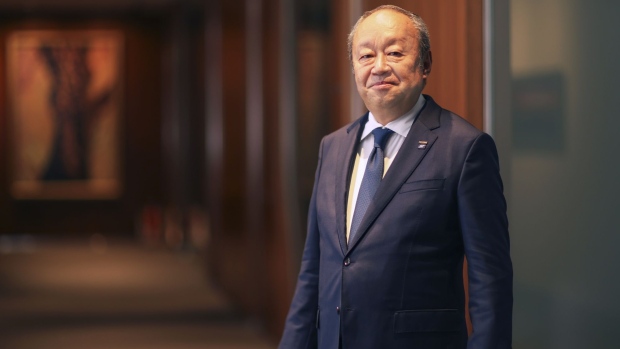Jul 8, 2021
Pandemic-Proof? Fujifilm’s Pivot to Health Care, Chips Pays Off
, Bloomberg News

(Bloomberg) -- Fujifilm Holdings Corp.’s tough decision to accept the demise of its film and digital photography businesses and embrace the health care and semiconductor sectors was validated last year during the pandemic, the company’s new chief executive officer said.
“Health care and semiconductor materials will be our future earnings drivers,” Teiichi Goto, who took the top post at Fujifilm last month, said in an interview Wednesday.
Over the past decade, Fujifilm parlayed its expertise in film and chemicals to move into medical diagnostics, pharmaceutical manufacturing and supplying materials to chipmakers. While almost half of Fujifilm’s 2.2 trillion yen ($20 billion) in sales in the latest fiscal year through March came from those two segments, they generate about two-thirds of the Tokyo-based company’s operating income.
“We’ve pivoted decisively toward health care,” said Goto, whose first job at the company was selling color film, in 1983. “And apart from health care, the materials business for semiconductors is very interesting.”
With more people spending time at home, demand for everything from smartphones and tablets, to computers and gaming consoles, has soared, fueling unprecedented demand for chips and triggering shortages in other sectors, such as the global auto industry. At the same time, the pandemic has fueled a greater need for pharmaceutical compounds and more investment in medical-sector devices and equipment.
Read more: Chip Crisis Deepens With Daimler, Jaguar Warnings on Sales
Both trends are now lifting Fujifilm, which has committed 1.24 trillion yen to invest in equipment, facilities and research and development over the next three years, with the majority of that earmarked for the health care and material segments. Goto most recently ran the company’s medical systems business.
While some of the growth of the health care business came from mergers and acquisitions, the same strategy probably won’t be applied to the chipmaking materials, according to the CEO. “For semiconductor materials, my thinking is that we need to go deeper than M&A and invest in research and development,” he said, adding that he would still pursue deals and has several in mind if the timing is right.
A bigger part of the company’s efforts will be devoted to expanding sales of semiconductor materials, which is part of the high-function materials segment that made up about a 10th of revenue last year. Demand for chip materials will increase thanks to the growth of 5G and autonomous driving, Goto said.
Fujifilm’s health care business primarily consists of medical diagnostics equipment and contract development and manufacturing of drugs for pharmaceutical companies. That paid off during the pandemic, as it geared up to produce reagents for PCR tests, sell rapid test kits and manufacture Covid-19 vaccines. Its novel flu drug Avigan also unexpectedly emerged as a recommended Covid treatment in Japan.
The pivot into health care and materials, led by Goto’s predecessor Shigetaka Komori, was controversial at the time. Now, he’s being widely credited and lauded for keeping the company afloat and avoiding the fate that befell former rival Eastman Kodak Co., which declared bankruptcy a decade ago. Fujifilm’s shares are up about 50% this year, following a 4% rise in 2020.
Asked whether there was any chance that Fujifilm would change its name, given its evolution, Goto ruled it out.
“Film isn’t just about photos,” Goto said. “There’s polarizer film for displays, medical dry film, antibacterial film. Ours is a logo that sticks all that together.”
©2021 Bloomberg L.P.





